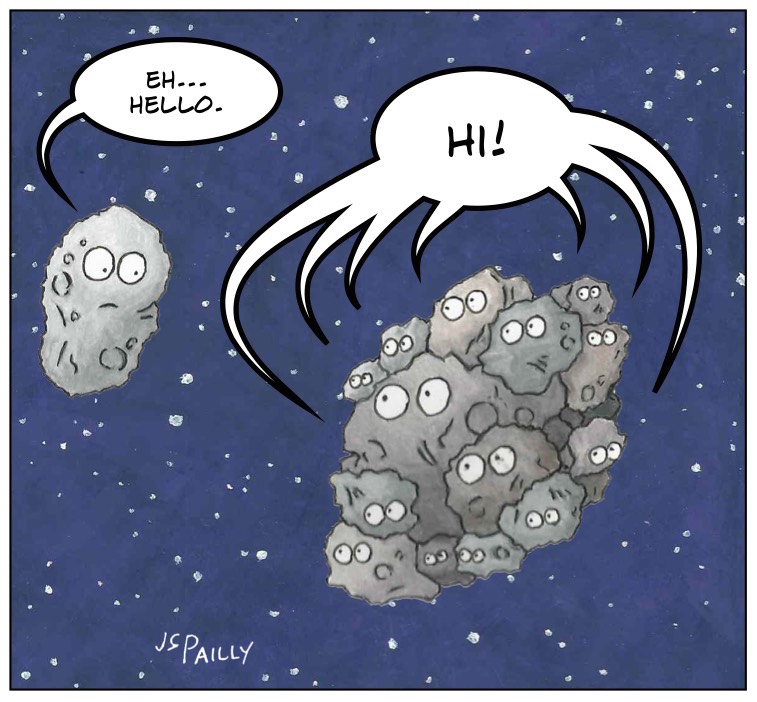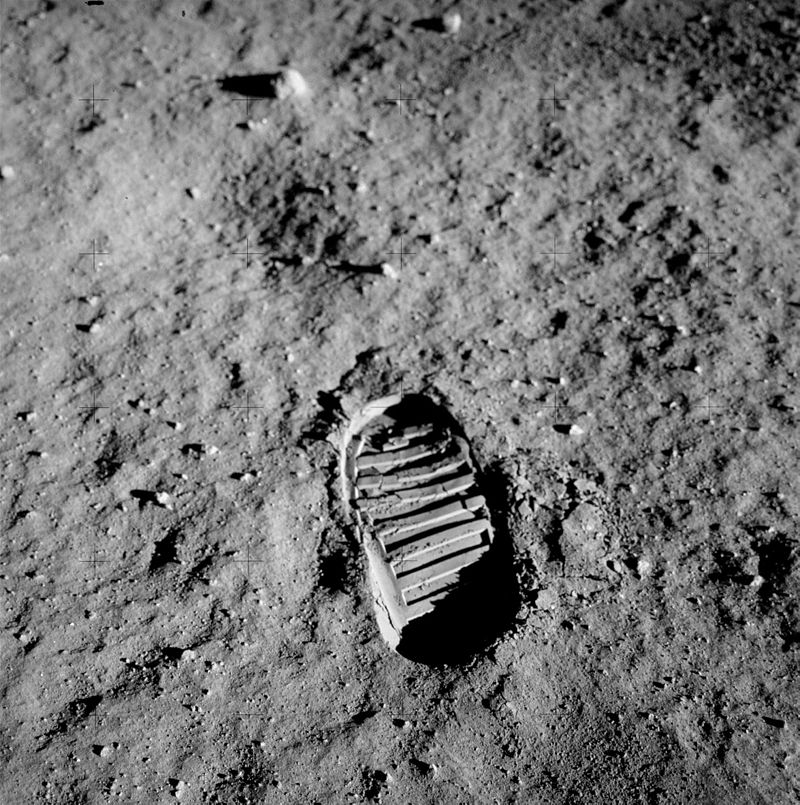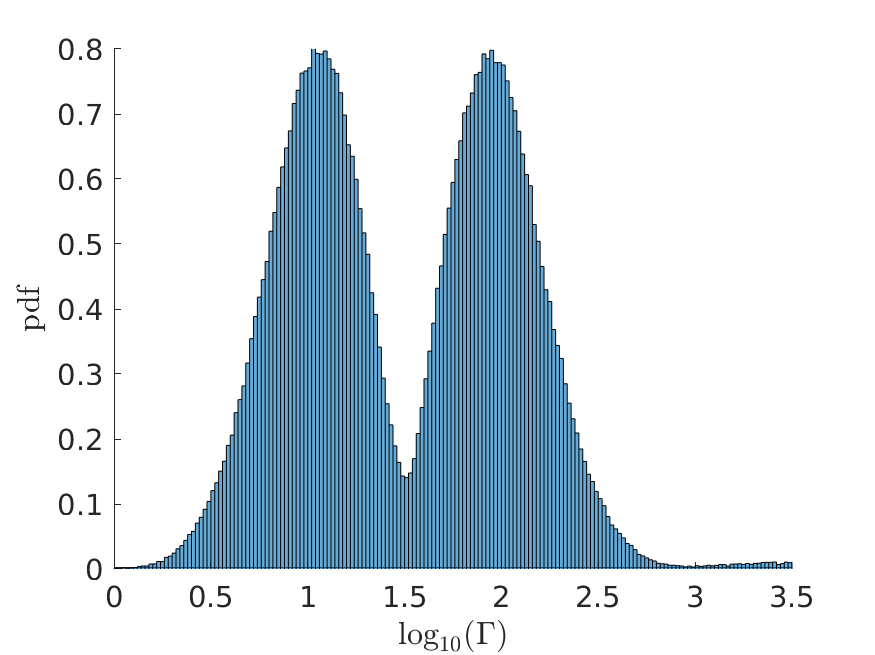The low thermal inertia of asteroid (499998) 2011 PT
Marco Fenucci (@OnFenu) - December 11, 2020
Why are asteroids important to study and explore?
Asteroids are mostly made of rock and different metals, such as nickel and iron. Understanding the internal composition and the nature of materials lying on the surface of an asteroid is important for different reasons. From the scientific point of view, these information might provide important clues to better understand the formation and the past evolution of asteroids.
From a planetary defense perspective, knowing the composition and the internal structure of a potentially hazardous object is fundamental for the planning of a deflection mission. For instance, the optimal technique to deviate a monolithic object composed by solid rock and iron materials may not work for an object composed by an agglomerate of small rocks, kept together by means of their weak gravity force (rubble-piles, see Figure 1).
Last but not least, materials on asteroids could be exploited in future mining missions. Rare substances, such as platinum group metals and industrial metals, might be brought back to Earth, and volatile like hydrogen, carbon, and H2O can be used in-situ to produce fuel and continue the Solar System exploration.


Surface properties of asteroids: what we know and what we have to understand
Properties of asteroids larger than about 150 meters have been studied more in deep so far. Visits of Galileo and NEAR-Shoemaker NASA missions to (243) Ida, (433) Eros, and (951) Gaspra revealed that km-sized asteroids are able to keep the so called regolith on their surface. Regolith consists in loose deposits such as fine dust, tiny porous rocky particles and small gravel, and it is supposed to be formed by break-up of rocks and boulders caused by both impacts of meteoroids and cracks caused by heat. The most famous example of regolith is represented by the lunar soil (see Figure 2). These surface materials preserve records of geophysical processes occurred in the past evolution of the asteroid.
The visit of (25143) Itokawa by the JAXA Hayabusa mission about 15 years ago revealed that regolith could be present also on objects of about 300 meters in size, differently from what previously thought. These findings changed our perspective on the ability of sub-km sized asteroids to preserve regolith-like material on their surface, and new questions were raised. In particular, it is known that asteroids smaller than about 150 meters can rotate very fast, completing an entire revolution in few minutes. Mathematical models suggest that also fast rotators might be able to retain regolith on their surface, however there are no direct observations yet.
What is thermal inertia? Understanding the surface composition.
A physical property astronomers are interested into is thermal inertia, a parameter that indicates how much a material resists to temperature changes. High values mean that it takes a long time to heat the material up and cool it down, while small values mean that it is able to change its temperature more quickly. For instance, rocks and water have a high thermal inertia, while beach sand has a low thermal inertia. Measuring, estimating and constraining the thermal inertia of an asteroid could reveal the nature of the surface soil. Indeed, low values suggest the presence of thermal insulating materials such as regolith, while moderate and high values are representative of a bare rock composition. On the other hand, very high values are typical of metal materials.
The Yarkovsky effect: where surface composition meets dynamics.
In general, the face of an object (either a planet, a satellite, or an asteroid) exposed to sunlight is heated up, and the energy is re-radiated away as heat. Since the thermal inertia of a real material is not zero, there is a delay between the time the sunlight is received and the time the energy is re-emitted away. A similar effect is experienced on Earth in the fact that the hottest time of the day is the first part of the afternoon, rather than mid-day. This happens because most of the sunlight is received at noon, and then re-emitted away a couple of hours later by effect of the finite thermal inertia of Earth’s surface.
The faster rotation of asteroids (usually few hours) causes the re-emission of energy to be directed along the orbital motion. For objects smaller than few kilometers the thermal re-emission acts as a tiny and continuous thrust, that can significantly speed them up or slow them down, changing their orbital motion. Nowadays this mechanism is known as Yarkovsky effect, and thermal inertia determines the its magnitude. Therefore, the Yarkovsky effect is a place where composition and physical properties are connected to orbital dynamics.
Asteroid 2011 PT: a small and super-fast rotator with a low thermal inertia.
In the effort of understanding the physical properties of small asteroids, we recently studied (499998) 2011 PT, an interesting small near-Earth object of about 35 meters in diameter that rotates very fast, with a period of about 11 minutes. The video of its orbit can be seen in Video 1.
The Yarkovsky effect has been determined by using observation taken during a large interval of time. On the other hand, a prediction of the Yarkovsky effect can be made by means of a mathematical model, based on physical characteristics of the asteroid. The surface thermal inertia can be estimated by determining the values for which the predictions are compatible with the measurements of the Yarkovsky effect.
We applied this method to 2011 PT, and the distribution of thermal inertia values compatible with the Yarkovsky drift measurement are shown in Figure 3. The x-axis refers to the value of thermal inertia (in J m-2 k-1 s-1/2 units) in logarithmic scale, while the y-axis indicates how probable a value is. The distribution has two peaks, meaning that there are two most likely values, and they are both at low thermal inertia. The first one is at around 11 and the second at around 80 J m-2 k-1 s-1/2. As a comparison, thermal inertia of lunar regolith is around 50 J m-2 k-1 s-1/2.
This finding could be explained by the fact that if the thermal inertia were high, the temperature would be spread uniformly across the surface by effect of the fast rotation, thus lowering the magnitude of the Yarkovsky effect. On the other hand, a low thermal inertia may be able to keep a fair temperature difference between the day and the night side of this asteroid, despite the short rotation period of 11 minutes, which results in a more efficient Yarkovsky effect.

The highest thermal inertia solution at 80 J m-2 k-1 s-1/2 could be associated to the presence of a thermal insulating layer composed by regolith-like material, similar to lunar soil, while the lowest peak might indicate the presence of even finer dusty particles. Our study provides the first evidence that even small and super-fast rotating asteroids could retain regolith on their surface, adding a piece to the puzzle of the characterization of the population of asteroids smaller than 100 meters. More studies on 10 meter-sized asteroids are needed to better understand their surface and internal composition, since these information are crucial for an eventual deflection mission. In this respect, the future visit to the super-fast rotating asteroid 1998 KY26, occurring in 2031 during the JAXA Hayabusa2 mission extension, will provide the first in-situ characterization of such objects. However, studies like ours remain the best possible way to understand the whole picture, since space missions are still expansive and they can visit only a small number of targets.
References
-
Marco Fenucci, Bojan Novaković, David Vokrouhlický, Robert J. Weryk: Low thermal conductivity of the superfast rotator (499998) 2011 PT. Astronomy & Astrophysics 647, A61 (2021).
Share this content:

